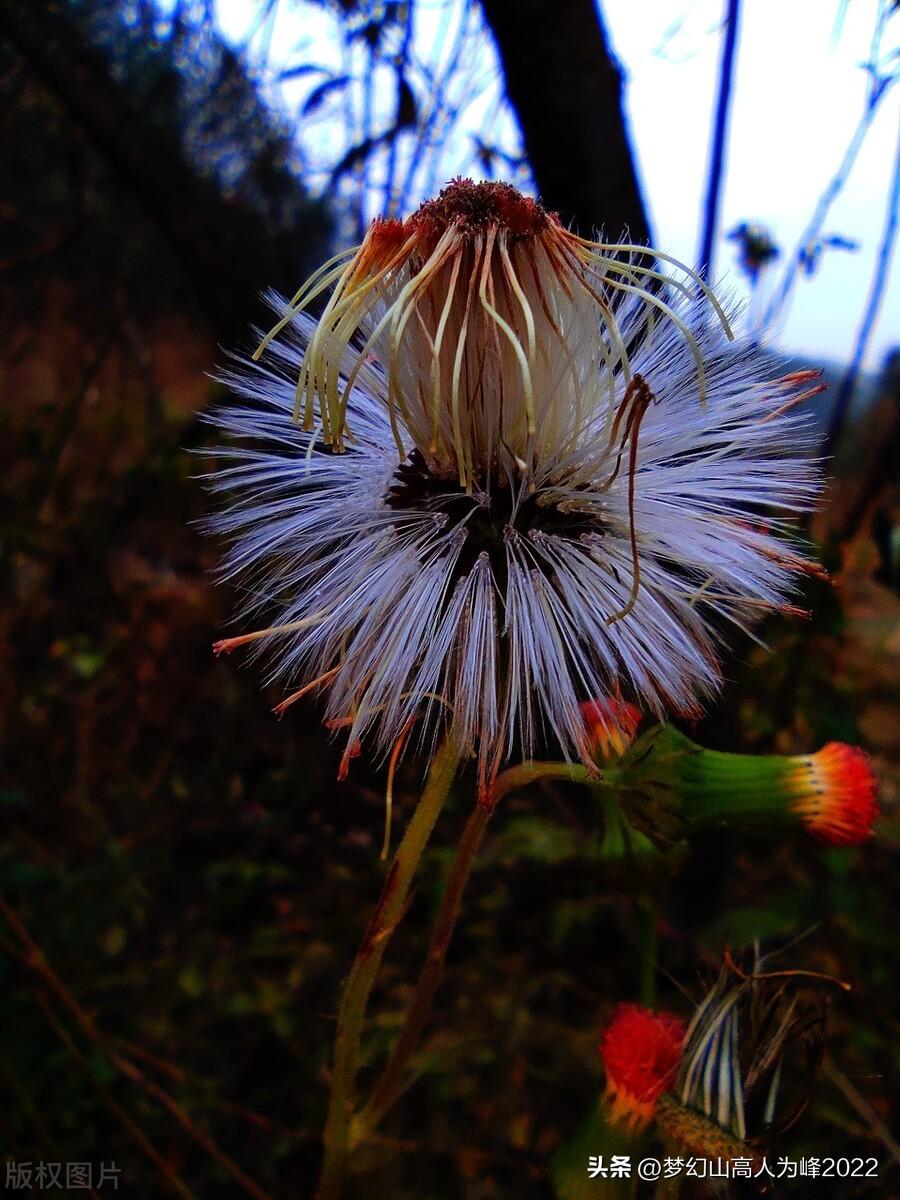Teaching Objective:
1. Learn the 12 new characters in this lesson, read the pronunciation of the characters accurately, master the shape of the characters, and understand the meaning of the characters. Can write 10 new characters such as "wa, wa, fen".
2. By reading this poem, let students understand the three ways of plants to spread seeds, and stimulate students' love of nature and desire to pursue knowledge.
3. Guide students to read the text correctly, fluently, and emotionally.

Teaching focus:
Learn the 12 new words in this lesson, read the pronunciation, master the shape, and understand the meaning of the words. Can write 10 new characters such as "wa, wa, fen".
Teaching Preparation:
Courseware, word cards
Teaching time:
Two class hours
Teaching Process:
The first lesson
1. Introduce topics:
Learn the first paragraph and introduce the topic
The teacher reads "If a child has grown up, he has to say goodbye to his mother and make his home around the world. Cows and horses have feet, birds have wings, and plants rely on What can I do?" (The courseware shows this paragraph)
Teacher: Please read it, is there anything you don’t understand? anymore question?
Understand "the world is our home".
Learn the two pronunciations of the travel character and guide the polyphonic character "Wei".
Guide to read the first section aloud. Read the questioning tone.
Reveal the topic: Yes! Plants have no feet and no wings. How should they bid farewell to their mothers and find their own home? Hey, the plant mother is so smart! They have their own way, let's take a look together!
Blackboard writing: Plant mothers have a way

2. First read the text and learn new words
1. Read the text freely, circle the new words, read the unreadable sentences several times, and mark the number of sections.
Show new words. Read by name, and the teacher will lead the reading.
Discovery: the first two rows are pictophonetic characters. Which word do you find most difficult to recognize?
Show a single word.
The voices at the same table read each other, and the competition reads.
Guide memory.
Find friends for Brigade, Cha, Jiang, and Wa.
Learn the three pronunciations of polyphonic characters and read three sentences accurately.
a. If the son grows up, he will have to say goodbye to his mother and make the world his home.
b. There is a lot of knowledge in nature, but careless children can't get it.
c, How far do dandelion seeds fly!
2. There are several sections in total. Proofreading section.
3. Correct pronunciation, read the text.
Read by name: Which section do you like, can you come and read it? Teachers and students have a common pronunciation. If you don't read well, find a classmate to read again.
4. Read the text again:
Which good methods for plant mothers are introduced in the text?
Teacher: Which good methods for plant mothers are introduced in the poem?
Lesson file presentation: Picture and name of dandelion cocklebur pea.
Teach students characters: Pu Cang These are two new characters, do you remember them? Can you tell us about your good method? (They are both plants, so they are both cursive characters; the two are pictophonetic characters.)

3. Consolidation exercises
1. Show the word card, drive the train, and expand the vocabulary for new words.
2. Compare form and near characters
Show:
Plant ( ) Good ( ) Baby ( ) Sprinkle ( ) Self ( )
value ( ) such as ( ) depression ( ) sun ( ) has ( )
4. Guide writing
Ha, Jia, Dou, Knowledge, Diversity, Jing
Key points to distinguish: the words have and ji.
Confession: Ji, Jia, and Dou are single characters.
Fun, Jing, guide to write next to the reel.
Written by teachers.
Strong red.
Practice writing.
Comments.
Second lesson
1. Review and import
Always recite the first measure.
Through the study of the last class, we know which methods of plant mothers the text introduces to us? (dandelion cocklebur pea)
What good ways do these plant mothers have? Let's go and see it together!
Show pictures.
2. Study the text
Among these plants, read which section you like best.
Teacher: Which mother's method do you like the most, and what is so good about her method? Individual communication.
Take the second subsection as an example:
Dandelions are my favorite.
①How does dandelion spread? (Find a sentence from the book and read it)
Show pictures: Dandelions are flying away
Comprehension: set off one after another and speak with "one after another".
[Such accumulation It not only sublimates the students' emotions, but also improves the students' aesthetic realm. It is of great significance in Chinese teaching to make full use of the intuition of language sense and train students' language ability. This is because although language sense is an intuitive ability of language, training language sense is a non-intuitive process. In this process, it is necessary to repeatedly feel and comprehend various verbal materials, repeatedly carry out perceptual and rational understanding, and accumulate knowledge and experience of society, nature and life, so that students can understand The feeling of speech will gradually change from superficial, narrow, and dull to deep, comprehensive, sensitive, and rapid. ]
② Guide reading aloud.
Self-study the third and fourth sections.
The third section:
Tip: What can plants use to disperse their seeds?
Understand the word "hang" (alternative: stick)
Let students use the two words: pop and fry to spread the seeds of peas.
Give them enough time to understand, and then read it visually.
Finally study the fifth section.
Show this passage
Teacher: What do you know after reading it?
Student feedback: There are many ways for plant mothers to spread seeds. Many knowledge in nature can only be obtained by careful observation. If you are not careful, you will learn Less than knowledge.
Teacher: After reading this passage, what do you want to do in the future?
Third, extend extracurricular and expand knowledge
Teacher: Please observe by yourself, find out which plants mothers use to spread their seeds? Communicate in the next class.
4. Consolidation exercises
extension Say repeated words
up Up and down, often in a hurry, earnestly, really happy and happy
Many in and out high Happy, happy, colorful, green, happy
[Such accumulation It not only stimulates students' interest in learning proverbs, but also allows them to learn better knowledge. Chinese teaching must cultivate students' basic skills such as looking up dictionaries, reading aloud, silent reading, speaking, listening, composition, and writing in a large number of language practice processes; let students learn to use a variety of reading methods and common language expressions, and be able to master commonly used Way of thinking, good at processing and expressing one's own unique thinking results in standardized language, initially possessing the ability to collect and process information; able to use language appropriately according to different language materials and different communication situations, and finally form a good sense of language. ]
5. Classroom practice
() mom(),
her( ) child( ),
As long as ( ),
The children are ( ).
[Student no longer The acquisition of language is regarded as forced by external survival, but as the inner impulse of the subject to be actively realized. What the student feels in his studies will no longer be toil and tedium, but the joy of creation, a remarkable testament to his comprehensiveness, universality, and creativity. ]
6. Writing guidance: baby is good
Focus on guidance: the right half of the two characters "wa" and "wa" is to write a soil character first and then a soil character, instead of writing four characters first Write a horizontal and then a vertical.
For example, don't mention the female characters in the middle.
Written by teachers.
Strong red.
Practice writing.
Comments.
Articles are uploaded by users and are for non-commercial browsing only. Posted by: Lomu, please indicate the source: https://www.daogebangong.com/en/articles/detail/Part%202%20PEP%20Second%20Grade%20Volume%201%20Plant%20Mothers%20Have%20a%20Way%20Lesson%202.html

 支付宝扫一扫
支付宝扫一扫 
评论列表(196条)
测试